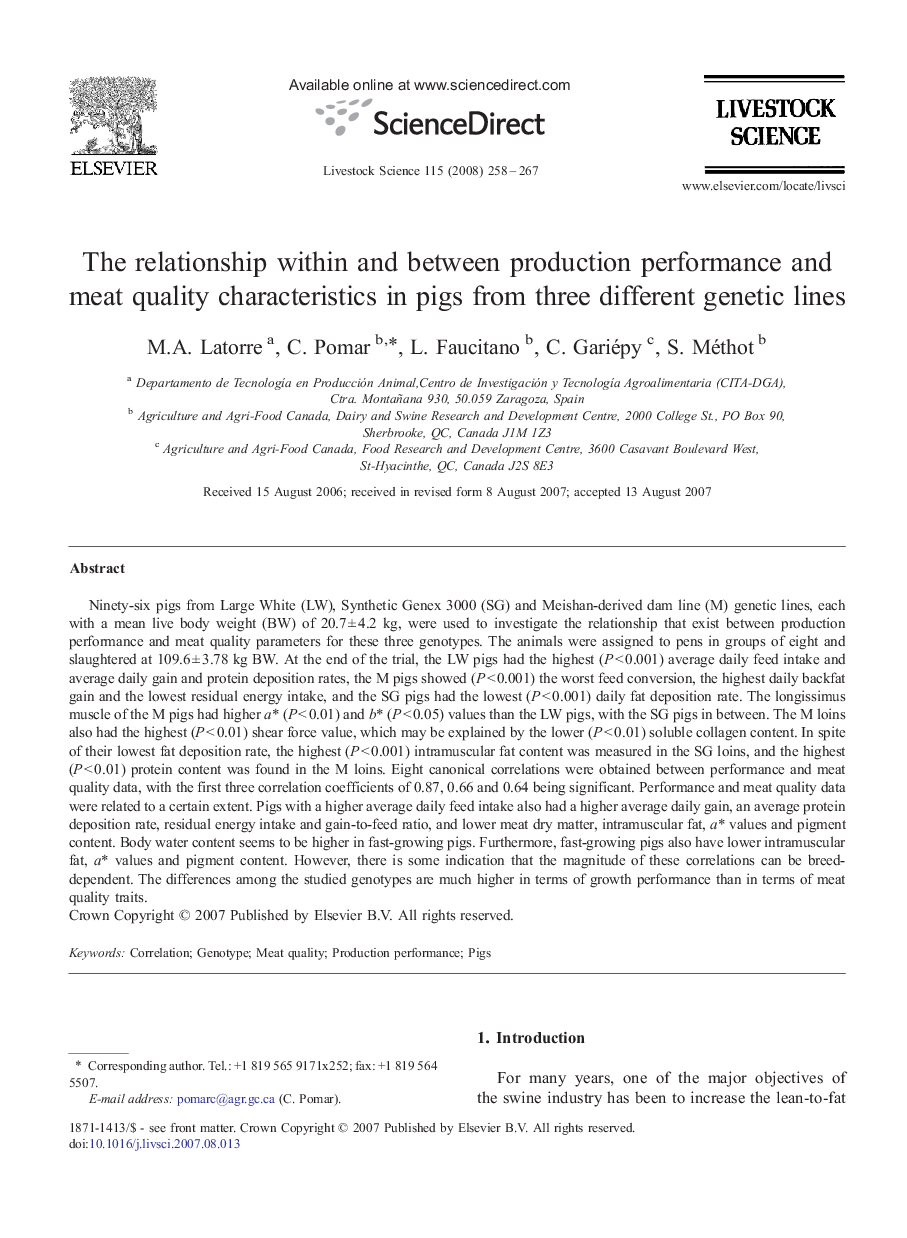| کد مقاله | کد نشریه | سال انتشار | مقاله انگلیسی | نسخه تمام متن |
|---|---|---|---|---|
| 2448508 | 1554018 | 2008 | 10 صفحه PDF | دانلود رایگان |

Ninety-six pigs from Large White (LW), Synthetic Genex 3000 (SG) and Meishan-derived dam line (M) genetic lines, each with a mean live body weight (BW) of 20.7 ± 4.2 kg, were used to investigate the relationship that exist between production performance and meat quality parameters for these three genotypes. The animals were assigned to pens in groups of eight and slaughtered at 109.6 ± 3.78 kg BW. At the end of the trial, the LW pigs had the highest (P < 0.001) average daily feed intake and average daily gain and protein deposition rates, the M pigs showed (P < 0.001) the worst feed conversion, the highest daily backfat gain and the lowest residual energy intake, and the SG pigs had the lowest (P < 0.001) daily fat deposition rate. The longissimus muscle of the M pigs had higher a⁎ (P < 0.01) and b⁎ (P < 0.05) values than the LW pigs, with the SG pigs in between. The M loins also had the highest (P < 0.01) shear force value, which may be explained by the lower (P < 0.01) soluble collagen content. In spite of their lowest fat deposition rate, the highest (P < 0.001) intramuscular fat content was measured in the SG loins, and the highest (P < 0.01) protein content was found in the M loins. Eight canonical correlations were obtained between performance and meat quality data, with the first three correlation coefficients of 0.87, 0.66 and 0.64 being significant. Performance and meat quality data were related to a certain extent. Pigs with a higher average daily feed intake also had a higher average daily gain, an average protein deposition rate, residual energy intake and gain-to-feed ratio, and lower meat dry matter, intramuscular fat, a⁎ values and pigment content. Body water content seems to be higher in fast-growing pigs. Furthermore, fast-growing pigs also have lower intramuscular fat, a⁎ values and pigment content. However, there is some indication that the magnitude of these correlations can be breed-dependent. The differences among the studied genotypes are much higher in terms of growth performance than in terms of meat quality traits.
Journal: Livestock Science - Volume 115, Issues 2–3, June 2008, Pages 258–267